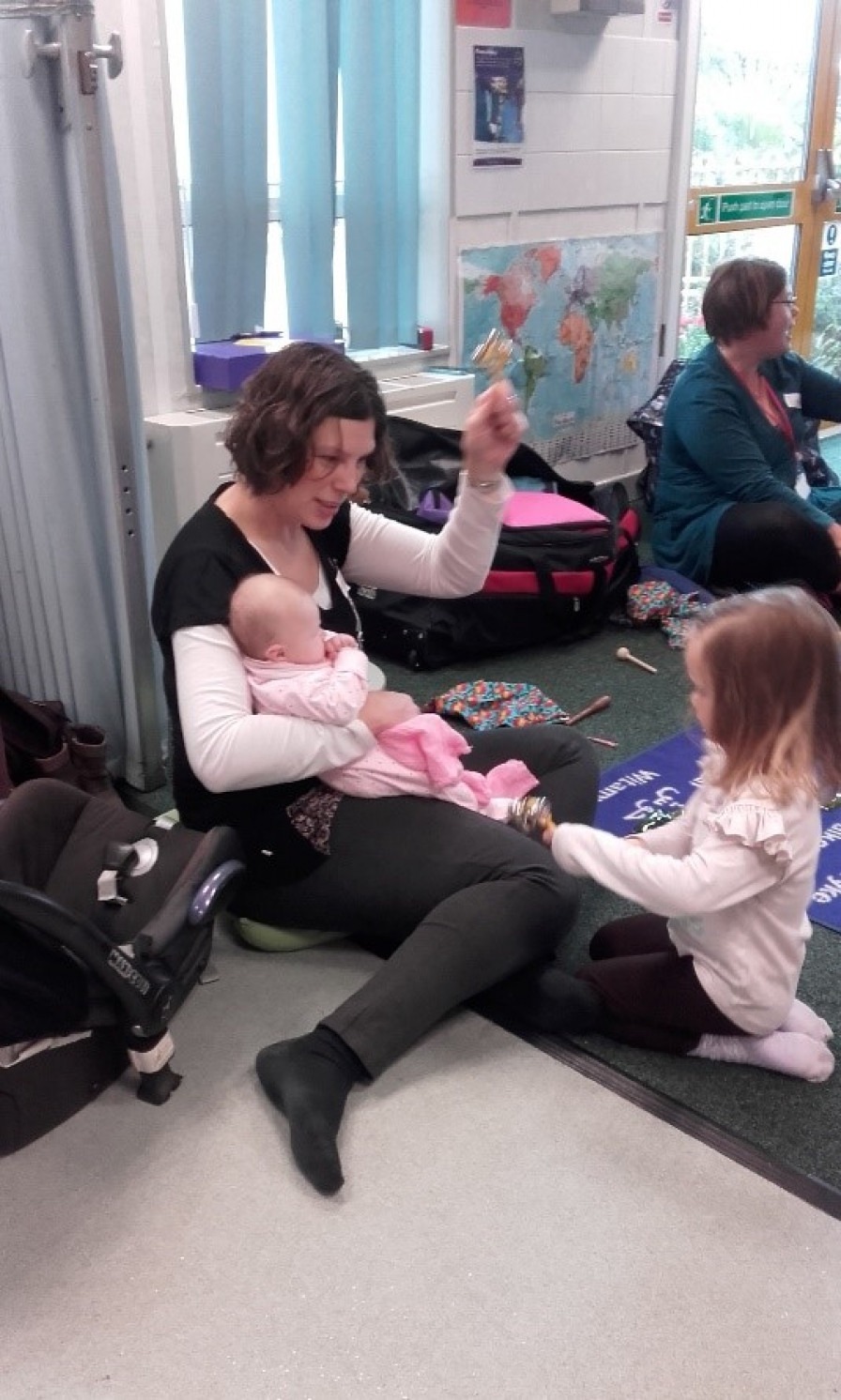Case study

As part of the project we focus on one child in our group to chart their development within the sessions. We make a baseline assessment based on the Early Years Foundation Stage levels and then through the sessions observing their musical development and activities. At the end of the project we look again at the EYFS levels that are linked with their musical and communication development.
Faye is a three year old little girl (29/07/2012) who came along to the group with her mother and her new born sister. As well as having time alone with mum Faye also attended a nursery part time. Within the group Faye was the oldest child and she certainly seemed the most confident, in the first session she showed a spirit of curiosity and exploration. She seemed to particularly enjoy playing with kitchen utensils as instruments. In her baseline we assessed that she frequently showed single channelled attention which could be shifted to a different task if attention was attained (22-35 months) she showed that she understood simple conceptions such as short/long, loud/soft (22-35 months). With mum she had a conversation that allowed us to assess her at 22-35 months and she clearly and consistently expressed her preferences and interests, she engaged with other children as they played and showed interest in what they did and had a clear, consistent sense of what should be shared and what belonged to herself or others(16-25 months).
Each week when the instruments came out Faye showed a high level of proactivity, she consistently made sounds with instruments (P2a) and explored patterns in sounds consistently (P3a), it was difficult to assess whether she had a higher level of proactive understanding as within the group she joined in with singing but was not proactive in it, although mum said that she often sang at home, songs that she had learned at nursery. Faye loved games of contrast, making sudden changes in patterns of sounds that she made (P3c) and by the end of the 10 weeks she had a good understanding of the meaning in our transition songs (P4d).
It was difficult to assess Faye within the interactive domain, within the group, because of being the eldest and most dominant character, she took a lead and rather than interact she dominated. She was aware of being copied (I3c) and although I had glimpses that she was able to copy it was difficult to draw her from games where we copied her into her copying us. (I3/4d). This I think was more due where Faye was at socially rather than musically. I think that recently having a new sister and the change that that bought to her life meant that she loved the control of being copied and didn’t want to give that up. She enjoyed games where we took it in turns in interaction (I4d) and played games like this with an adult, myself or other staff in group but she didn’t really enjoy taking turns with other children.
Faye enjoyed listening to the range of music that we played within the group, and she often responded by moving or playing along (R2a and R2B). She was able to play along regularly in time with music at different speeds (R3b) she particularly enjoyed listening when there was a sudden change in sound and responded appropriately (R3c). She showed a good understanding of how pieces of music can be linked with events (R4d) when we played quiet soothing music she laid the teddies down to sleep and when the music was lively and loud she made the teddies dance. She loved these games and would make a request to play the game with the teddies, putting them to sleep and jumping them on the bed. She would sing along with her favourite songs and would concentrate on a song through it all if she was motivated. (R5a)
At the end of the project I found that Faye had shown progress in her listening and attending that through the 10 weeks she had shown that she joins in with repeated refrains and anticipates key events in a piece of music (30-50 months) and understanding that she had demonstrated that she could follow simple instructions (30-50 months). Faye enjoyed imagination play and often played games with pretending (30-50 months). In our sessions she was so dominant that we didn’t really see progress in her self-confidence, because expressing her preferences and interests was such a focus for Faye. Again because of her position in the group we didn’t really see progression from being interested in other children’s play to being able to play in a group (22-35 months). Faye continued to show a good understanding of people’s belongings (22-35 months) but struggled with cooperating, she should a good understanding of boundaries when she was enforcing them and enjoyed telling other children what rules to follow.
